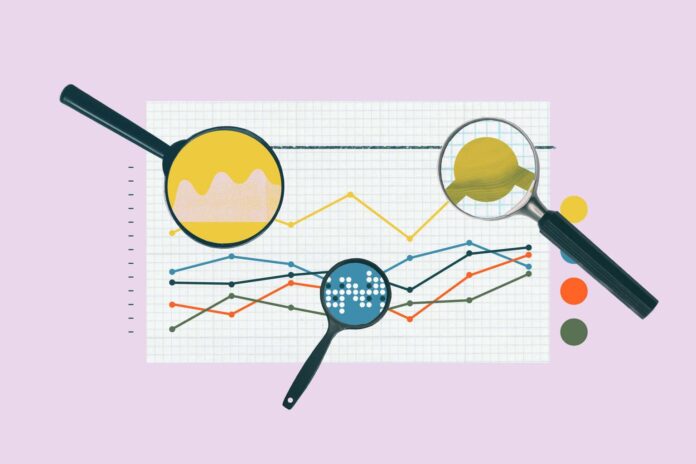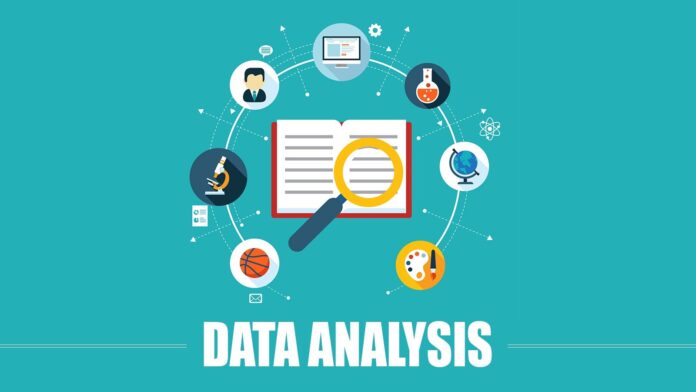The marketing landscape is a constantly evolving entity. With every emerging trend, breakthrough technology, and shifting consumer behavior, the dynamics of the marketplace transform. Amidst these changes, one factor has steadily gained prominence over the past decade – data. Today, in the age of information overload, marketers have access to a treasure trove of data, making Data-Driven Marketing (DDM) the new guiding their strategies.
Importance of Analytics in Marketing Campaigns

In the realm of marketing, the role of analytics cannot be overstated. It is through analytics that raw data is transformed into actionable insights, providing a digital marketing agency with the necessary ammunition to design and deploy effective campaigns. As more businesses embrace digital transformation, the importance of analytics has escalated to unprecedented heights. Analytics not only measure campaign performance but also help to understand consumer behavior, track market trends, and gauge competition.
Marketers have always tried to understand their consumers, but analytics have broadened the scope of this understanding immensely. Now, we can track not only who our customers are, but also what they like, how they behave when they engage with our campaigns, and why they make certain decisions. This depth of understanding empowers marketers to design campaigns that truly resonate with their target audience, ultimately increasing conversions and boosting sales.
However, while the use of analytics is pivotal, it is equally important to remember that data is only as good as the insights drawn from it. Without effective analysis, it remains a cryptic sequence of numbers and facts. Therefore, adopting an analytic mindset is crucial for marketers. It is about discerning patterns, establishing correlations, and making predictions. In essence, analytics breathe life into data, making it a potent tool for enhancing marketing campaigns.
Collecting and Analyzing Customer Data

While it’s clear that data is indispensable for marketing, collecting and analyzing it can be a daunting task. There’s an incredible amount of information available, but the challenge lies in identifying what is relevant and how to best use it. To start with, businesses need to identify their target audience and determine what information is essential to understand their behavior and preferences.
Once the relevant data points are identified, they must be collected. This can be achieved through various means like customer surveys, website analytics, social media listening, CRM databases, and even third-party data providers. Marketers need to ensure that data collection is consistent and ongoing to keep insights up-to-date and accurate.
After collection comes the all-important task of analysis. Analyzing involves processing it to identify patterns, relationships, and trends. This can be done manually or with the help of analysis tools and software. It’s crucial that the analysis process is robust, as the insights derived will directly inform marketing strategies. Incorrect or misleading insights can result in ineffective campaigns, wasted resources, and missed opportunities.
Utilizing Data Insights to Inform Marketing Strategies

Armed with actionable insights from data analysis, marketers are now in a position to tailor their strategies with surgical precision. This is where the real power of data-driven marketing comes into play. Every piece of information about the customer, no matter how minute, can be leveraged to create personalized marketing strategies that align with the customer’s preferences and needs.
These insights can inform various aspects of a marketing campaign. They can help in segmenting the target audience, deciding the timing and frequency of campaigns, choosing the right channels for communication, crafting personalized messages, and even predicting future consumer behavior.
Remember, the goal is not just to use data to inform strategies but to do so in a way that enhances customer experience and drives engagement. It’s about creating a balance between business objectives and customer needs, about fostering relationships rather than pushing sales. When insights are utilized effectively, marketing strategies become more relevant, resonant, and rewarding, for both the business and the consumer.
Personalization and Targeted Messaging through Data Analysis

One of the most powerful applications of data analysis in marketing is personalization. In a world where consumers are constantly bombarded with generic marketing messages, personalization can be a game-changer. Personalized marketing refers to strategies that use insights to deliver individualized messages and product offerings to customers based on their unique behaviors and preferences.
Data analysis enables marketers to create a comprehensive profile of each customer – their likes, dislikes, buying habits, online behavior, and more. This information can be used to craft messages that feel personal and relevant. Whether it’s a personalized email, a product recommendation based on browsing history, or a special offer on a customer’s birthday, these tailored experiences make the customer feel valued and understood.
This level of personalization not only enhances customer satisfaction and loyalty but also significantly improves campaign performance. Research shows that personalized emails deliver six times higher transaction rates than non-personalized ones. Similarly, personalized ads can increase click-through rates by up to 10 times. Clearly, the power of personalization, driven by data analysis, can be a game-changing asset in any marketing toolkit.
Measuring and Monitoring Campaign Performance with Data

Data doesn’t just inform the creation of marketing campaigns; it is equally critical in assessing their success. By measuring and monitoring campaign performance using analytics, marketers can quantify their results, identify successful elements to replicate and spot weaknesses to rectify in future campaigns.
Key performance indicators (KPIs) like click-through rates, conversion rates, bounce rates, and engagement rates can provide valuable insights into how well a campaign is performing. Additionally, social media metrics such as likes, shares, comments, and follower growth can be indicative of a campaign’s success in terms of visibility and engagement.
Monitoring campaign performance isn’t a one-time exercise; it needs to be continuous. Consumer behaviors and market trends are always evolving, and what worked yesterday may not work today. By continually tracking performance, marketers can stay agile, adjusting and optimizing their strategies to ensure they are consistently delivering the best results.
In conclusion
Data-driven marketing is a powerful approach that can significantly enhance campaign performance. By leveraging analytics, businesses can gain insights, create personalized strategies, measure performance, and continually optimize their campaigns. While challenges exist, with respect for privacy, a commitment to data quality, and a balance between data and creativity, the potential of data-driven marketing is truly limitless.









